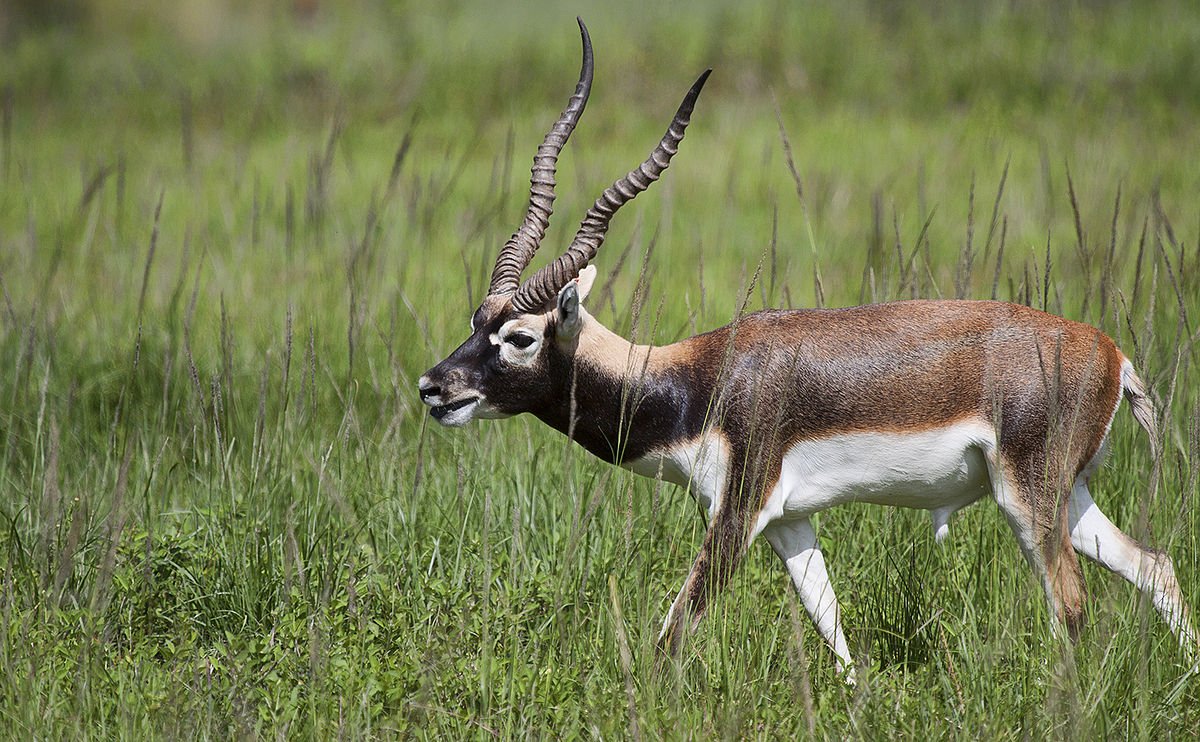Krishnasar Conservation Area is also known as the Blackbuck Conservation Area. The primary goal of the Krishnasar Conservation Area is to conserve the blackbuck. In the year 2065 B.S. (2009 A.D.) it was declared a conservation area. Blackbucks were thought to be extinct in the Bardiya National Park region and throughout Nepal in the early 2030 B.S.A search was conducted to see if this animal was still present in the Banke and Bardiya areas. Nine blackbucks were discovered in the jungle of KhairiPanditpur in 2032 BS. Then, by 2075, thanks to collaborative efforts, the number had risen to 187. As a result, the region is surrounded by 10.25 kilometers of barbed wire to better safeguard this species.Livestock farming is the main source of income for the residents of the Krishnasar Conservation Area. Blackbucks graze with animals in the area. The community woodlands in Bechaipur and Tulsipur are both protected and used by the locals. Furthermore, the majority of the existing blackbuck habitat was once private land.
What is Blackbuck? :The blackbucks, locally known as krishnasar is an antelope that is found in Nepal, India and Pakistan and is the only living member of the Antilope genus. In 1758, Swedish biologist Carl Linnaeus described the species and gave it its binomial name.Hindus, particularly the Yadav community, regard the blackbuck as a sacred animal.
Location: Krishnasar Conservation Area is located in Nepal’s western lowlands and has an area of 16.95 square kilometers. It is located in the Bardiya district’s Gulariya municipality.
Climate: The climate of the Krishnasar Conservation Area is tropical monsoon. From October until early April, the weather is dry. From April through June, the temperature rises to 45 degrees Celsius.
Flora and Fauna: In this area, there are two types of woods: natural and planted woods. Simal-Khair (Nombaxceiba-Acacia catechu) dominates the natural forest, whereas Sissoo dominates the cultivated forest (Dalbergiasissoo). The blackbuck habitat is home to 109 plant species. There are also fourteen mammalian species, twelve reptile species, and sixty-four bird species in the region.
How to get there: It is not difficult to reach the Krishnasar Conservation Area located in Nepal’s Terai area. We’ll be able to fly to Nepalgunj. A bus travel to Bardiya takes roughly 3-4 hours from there. Travelers arriving by bus from Kathmandu must disembark at Khairapur and walk 500 meters to the headquarters.
Moreover, Krishnasar Conservation Area is one of the Nepal’s rarely known Conservation Area. Many of us might not have known about this Conservation Area due to which it is facing the problems of low maintenance and the preservation of this Conservation Area is being deteriorated day by day. Due to a lack of physical infrastructure, all employees are required to stay in the main office and travel from there for day-to-day supervision.The proper conservation and maintenance of this Conservation Area can result in a number of benefits, including an increase in local people’s income from tourism-related businesses, enterprises, and jobs, as well as the potential for the government of Nepal to generate revenue by developing tourism infrastructure for national and international visitors.I hope that this article will aid in the preservation of a viable blackbuck population in the Krishnasar Conservation Area.
Article written by: Saru Niraula for Land Nepal




